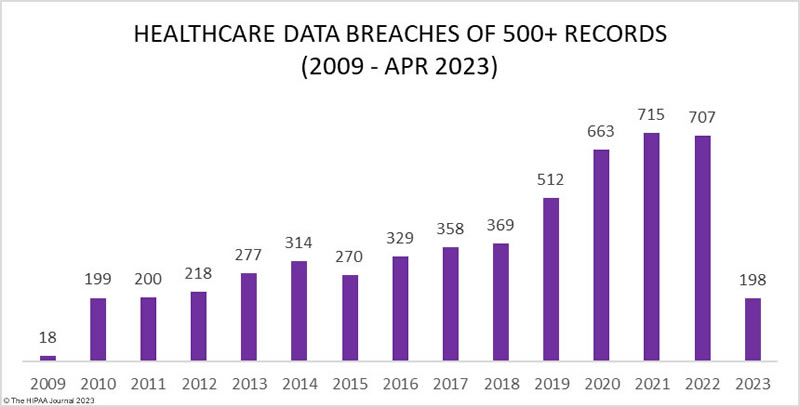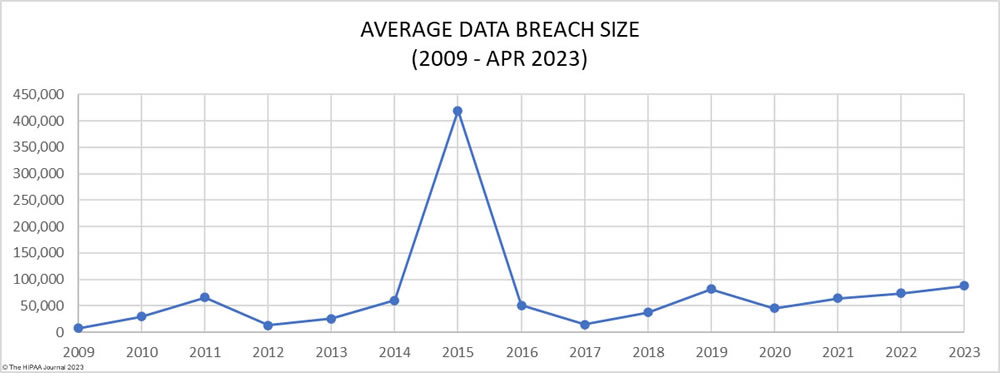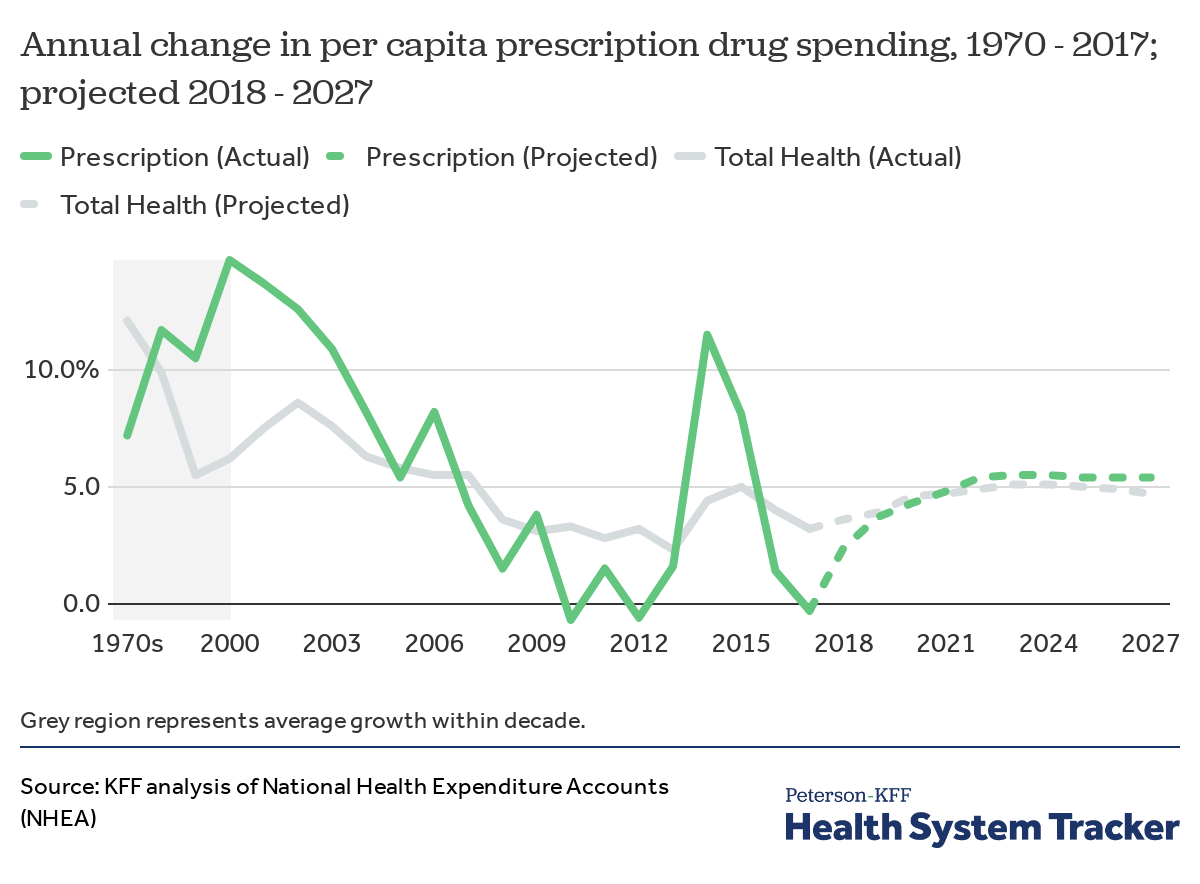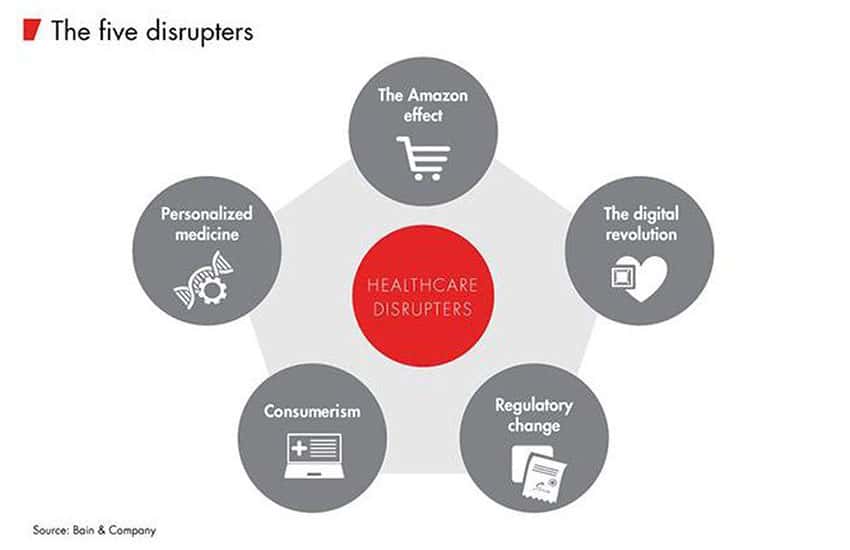Top 10 Challenges Healthcare Companies Face Today
The challenges the healthcare industry faces have always been increasing! While there is hope in technology but the constraints remain aplenty. Let’s take a look at the top 10 healthcare challenges that companies face today and what effective measures can be taken to resolve those challenges.
We live in a time when previous technologies have reached their peak and new technologies are on the verge of making a drastic impact on our lives. It seems Peter Thiel can get his flying cars very soon.
Well, the co-founder of PayPal, Thiel has valid concerns regarding decelerating technological innovations, ignorance of the world of things, and lack of government regulations, the recent developments in technology seem to efficiently address his concerns.
The new economy empowered by emerging technologies has changed the market landscape and no industry is untouched by this change.
Since healthcare is one of the most sensitive industries that is directly connected to us in almost all possible ways, emotionally, physically, mentally, and financially; the impact of the new economy and technology in healthcare requires immediate attention to address the challenge they bring.
If we take a look at the challenges faced by healthcare companies today, we will find that the concerns Peter Thiel had 7 years back were reasonable. The only difference is that now we are more empowered to resolve those challenges. Not all, but definitely most of them
So, it’s crucial that we acknowledge the healthcare industry’s challenges from digital transformation in healthcare. This list of the top 10 challenges healthcare service providers face will help us in doing so. The list of healthcare industry challenges today goes like this:
1. Advanced Health Technology
One of the challenges faced in the healthcare industry with the implementation of advanced health technology is the perception of Electronic Health Records (EHRs) as more challenging than beneficial. A significant study conducted by ehrintelligence found that around 40% of physicians believe that EHRs bring forth more challenges than benefits.
EHRs were introduced with the aim of improving patient care, enhancing communication, and streamlining healthcare processes. However, the reality is that many healthcare professionals have encountered difficulties in adapting to and effectively utilizing EHR systems. These challenges highlight the importance of thoughtful Medical Software Development that prioritizes usability, integration, and real-world clinical workflows. Some key challenges associated with implementation challenges in healthcare include:
-
- Time and Documentation Burden: Physicians often spend significant amounts of time documenting patient encounters in EHRs, which can lead to increased administrative burdens and reduced face-to-face patient interaction.
- Interoperability Issues: Limited interoperability between different EHR systems and healthcare organizations can impede the seamless exchange of patient information, hindering care coordination and continuity.
- Learning Curve and Training: Healthcare professionals need to undergo extensive training to effectively use EHR systems. The learning curve associated with new technology implementation in healthcare that can create initial challenges and resistance among physicians.
- Data Entry and Accuracy: The process of entering patient information into EHRs can be time-consuming and prone to errors. Incorrect or incomplete data entry can impact the quality of care and patient safety.
Most healthcare companies have either built their own infrastructure or hired external software development company to support most technology initiative, and we are seeing more and more off-the-shelf software supporting the trend.
2. Information and Integrated Health Services
The use of connected medical devices and AI-integrated software applications can provide a massive amount of data to healthcare companies which they can use to generate information.
This data can be of different types such as administrative data, patient medical records, connected device data, transcript & clinical notes, and patient surveys.
However, most care providers, even top healthcare companies, lack advanced architecture and data management systems to manage data collected from multiple sources.
The problem is the use of relational databases that cannot efficiently manage unstructured data collected from multiple sources, which means the value of the information they are getting is not absolute.
A transition from a relational to a non-relational database could help healthcare service providers handle large and unstructured data. As the business grows and the flow of data increases, the database’s architecture can be scaled to make room for the new data.
Healthcare companies need to plan all models for all the management layers—operational, tactical, and strategic, and partner with reliable integrators to have mature service management processes to support integrated health systems.
3. Cybersecurity
Connected medical devices and a greater need to keep records of patient information attract the attention of malicious hackers to healthcare providers. As you can see, healthcare data breach statistics clearly reveal an upward trend in data breaches from 2009—2023.

Image source:- healthcare data breach statistics
Those breaches have resulted in the theft/exposure of 382,262,109 healthcare records. That equates to more than 1.2x of the population of the United States.
If we analyze the health records exposed each year, we will see a massive increase in 2023, but the situation has improved since 2009 with successive falls in the number of exposed records.
These attacks call for a robust system for cybersecurity in healthcare, which could prevent data theft and loss of information, and customers’ conviction.
Even in 2023, almost all large health networks fell victim to cyber breaches with 20 percent of those attacks costing over one million dollars in recovery expenses.

Image source : hipaajournal.com
Influenced by the impact of technology in healthcare, Healthcare companies are moving ahead with their digitization plans. Although they need to be very careful and take proper measures to maintain healthcare cybersecurity, such as:
- Limit connected medical equipment access to trusted users
- Structure proprietary networks and spend on segregating external and internal medical devices on enterprise networks
- Follow application development security protocols
- Build a centralized system to manage information
And if they are outsourcing their IT processes to health technology companies, which include sensitive information such as patients’ personal information or transactional details, they should only rely on a HITRUST-certified third-party provider. As a result, for healthcare providers, it is incredibly essential to work only with a reliable software development company to update their challenges of digital transformation in healthcare and manage critical data.
Need Help With Healthcare
Software Development?
- Proven
- Transparent
- Dependable
4. Rising Healthcare Costs
The cost crisis in healthcare is not new. There are many stakeholders who play a key role in determining the cost of healthcare services, ranging from device manufacturers to medical drug manufacturing companies and payers to insurance policy providers.
Conflict is natural when so many stakeholders are involved. And developing a consensus requires strategic planning and time.
The rising cost of healthcare directly impacts the revenue of the healthcare companies, as increased cost discourages patients in many ways, from taking lab tests to doing regular follow-ups post visit, which ultimately leads to poor patient outcome.
According to Martin Gaynor, an economics professor at Carnegie Mellon University, “Health care spending is high, and it is ultimately unsustainable.”
Here are a few things healthcare providers can do to reduce the healthcare costs for patients:
- Provide local price variations to patients, either by healthcare providers or insurers
- Empower patients to choose high-value plans according to their wallets
- Reduce the number of medical tests for patients. According to a study mentioned by Dr. Atul Gawande, a surgeon, writer, public health researcher, 42% of patients received unnecessary tests in one year.
- Negotiate prescription drugs costs for consumers
Some other internal measures that could be taken by healthcare companies are reliance on healthcare information technology, build tools and platforms with software development companies with deep expertise in healthcare, and developing a consensus with pharmaceutical companies.
Investment in IT healthcare
A study from Health Affairs reveals that US healthcare systems can rely on more “frugal innovations” or say “good enough” products that are economically feasible and not technically inferior as well.
For example, a report from Science Direct states that investment in IT healthcare such as revenue cycle management software has been proven to reduce the operational cost. According to the author, “The usage of financial management systems is associated with lower hospital operating expenses.”
Besides, it is also the fact that administrative costs of United States account for or around 8% of their overall healthcare costs and the country could save $175 billion in healthcare costs by halving administrative costs—Jama Network.
5. Payment Processing and Invoicing
According to the KF health tracking poll, although most of the people confirmed that they can afford their treatment, one out of four faced difficulty in affording their medicine.
![]()
A combined effort from healthcare companies, insurers, and benefactors can help curb the rising cost of healthcare and thus help to solve one of the major digital transformation challenges in the healthcare industry. This effort leads to the development of effective medical billing processes and procedures, under which financial incentives can be associated with patient outcomes rather than service quantities.
Many patient advocates are now pushing for a new model that delivers quality over quantity, which could play a key role in improving patient outcomes at a lower cost. Healthcare service providers can create different versions of healthcare payment processing models, including invoicing and payment models depending on their business structure.
One of the successful models is 1ACO (Accountable Care Organization) wherein healthcare groups take responsibility for improving patient outcomes at a reduced cost.
Besides, healthcare companies can break the whole payment into small chunks to help patients/payers better plan their finances and mode of payment.
Again, they can collaborate with software developer to build healthcare billing systems with powerful features. Like flexible invoice management dashboard, advance collection, and adjustment, and separate OP and IP billing queue screen. This can help healthcare providers offer patient-centric solutions and combat healthcare industry challenges more efficiently.
6. Pressure on Pharmaceutical Prices
At the beginning of the year 2021, a report by ASPE revealed that there were 1,216 products price of increased during the twelve-month period from July 2021 to July 2022. It means the average price of the drugs increased by 8.5 percent for that time period.
To understand better check the below graph on how an increase in prescription prices has led to the slow growth of prescription spending.

The rise in pharmacy prescription prices is one of the major healthcare challenges for both healthcare enterprises and patients. According to Michael Rea, CEO of the Rx Saving Solutions, “The reason it can keep happening is there is no market check, no person or entity to bring reason to determining drug prices.”
An industry-based regulatory body can be formed including all the representatives of all the stakeholders of healthcare and pharmaceutical industries to at least control the hike in prices.
7. Healthcare Regulatory Changes
Regulatory challenges affect healthcare companies in two ways: one is it drives up the cost of healthcare services and second it creates confusion among the general public, which is required to be addressed in a precise and proper manner to avoid lawsuits.
With the rapid advancement of technology, timely reforms in healthcare laws are necessary. However, the problem lies in the readiness of companies to address the challenges that come with these reforms
- Health Insurance Portability and Accountability Act (HIPAA)
- Centers for Medicare and Medicaid Services (CMS)
- Joint Commission on Accreditation of Healthcare Organizations (JCAHO)
A lack of effort by healthcare service providers can lead to entanglement in complex lawsuits and penalties. To effectively combat these healthcare challenges, healthcare providers need to create a platform to raise awareness and share information quickly with all bodies.
8. Healthcare Staffing Shortages
The healthcare industry is facing a pressing challenge in the form of staffing shortages, which have been exacerbated by the COVID-19 pandemic. The demand for healthcare professionals, including doctors and registered nurses (RNs), is projected to surpass the available supply in the coming years. Industry groups predict a shortage of approximately 100,000 doctors by 2030, while the Bureau of Labor Statistics estimates the need for an additional 203,700 new RNs each year through 2026.
The pandemic has highlighted the critical importance of having an adequate healthcare workforce to provide quality care to patients. Healthcare providers struggled to meet the increased demand for healthcare services due to the shortage of staff. This shortage not only affects the accessibility of care but also puts a strain on the existing healthcare professionals who are burdened with heavy workloads.
Addressing the staffing shortage in healthcare requires a multifaceted approach. While technology, such as telehealth, can help bridge the gap by improving access to care in remote regions, it does not directly solve the underlying issue of the shortage itself. To mitigate the staffing challenges, it is crucial to focus on professional development and improvement in infrastructure.
9. External Market Disruption
There are many external forces that have made tentative inroads into healthcare, causing disruptive innovation in healthcare. Increased use of smartphones and the rise of mobile app development agency building innovative apps and e-commerce platforms have drastically changed the way businesses interact with their customers.
Healthcare consumers are no different. In fact, they are emotionally and physically vulnerable and so more sensitive to the quality of services.
According to Bain & Company, there are 5 key disruptors, which will cause disruptive innovation in healthcare and set the healthcare trends. They are:

Image source :forbes.com
These disruptors open up doors for new players outside the healthcare industry, leading to increased competition and healthcare industry challenges. Companies such as JPMorgan Chase, Amazon, and Berkshire Hathaway announced last year to deliver healthcare to their employees in yet-unspecified ways.
Amazon has also acquired wholesale pharmaceutical distribution licenses in several United States. Besides, there are other non-traditional players like Apple, Samsung, Alibaba, and Tencent that have entered the market.
These companies, powered by technology, have introduced the digital revolution and consumerism into the healthcare industry, which rings the alarm bell for existing players to invest in digital transformation in healthcare and other emerging technologies like AI, Machine Learning, and IoT.
10. Telehealth Implementation
Telehealth has witnessed a significant surge in usage, surpassing pre-pandemic levels even as Covid-related restrictions ease. This remarkable growth is reflected in the market valuation, which stood at USD 90.74 billion in 2021 and is projected to be USD 636.38 billion in 2028 at a CAGR of 32.1% in the forecast period, 2021-2028. However, the adoption of telehealth is not without its challenges, posing a key concern for healthcare companies during their technology and digital transformation endeavors.
One major challenge is the deceleration of digital health funding. While telehealth has demonstrated its potential to revolutionize healthcare delivery, the availability of adequate financial resources to support its implementation remains uncertain. Limited funding hampers the development and scaling of telehealth programs, hindering the optimization of patient care and accessibility.
Furthermore, the telehealth sector faces an uncertain regulatory future. As this innovative technology continues to evolve, regulations struggle to keep pace. The absence of clear and consistent guidelines creates ambiguity and hampers the seamless integration of telehealth into the healthcare ecosystem.
In the words of Angela Williams, CEO of Easter Seals, “There is going to be this gap, and there are some gaps where telehealth can’t replace the one-on-one, face-to-face interaction. That just really stands out when it comes to senior care, patients with Alzheimer’s and dementia. There’s no substitute.” This highlights the limitation of telehealth in certain healthcare scenarios that require direct, in-person interaction, raising concerns about the comprehensive care provided to vulnerable populations.
Over the past couple of years, healthcare companies have built comprehensive telehealth infra ranging from mobile app development to app driven EHR. Interesting observation has been seeing cross platform development where any experienced .NET development company with cross-platform expertise or React Native team could build app that works on both iOS and Android.
Conclusion
When making decisions, healthcare enterprises have to consider a range of healthcare challenges that emerge with new technology and changes in market practices. To effectively overcome these challenges, it is imperative for healthcare organizations to gain a deep understanding of the requirements and preferences of their consumers. By doing so, they can develop a targeted implementation approach that addresses the specific needs of their target audience.
For those seeking professionals in healthcare application development, connecting with the development experts at Finoit Technologies to learn more about how industry is using tech and how technology could help you. With years of experience and specialization in the healthcare domain, their experts possess comprehensive knowledge of the latest tools and technologies used in healthcare applications. Partnering with a reliable healthcare app development company can guarantee access to their expertise, enabling healthcare enterprises to build robust and cutting-edge applications that cater to the evolving needs of the industry.
Don’t wait any longer to unlock the potential of healthcare application development. Connect with Finoit Technologies’ development experts today by writing to info@finoit.com.
Looking to Get Healthcare
Software Products Built?
- Proven
- Transparent
- Dependable


